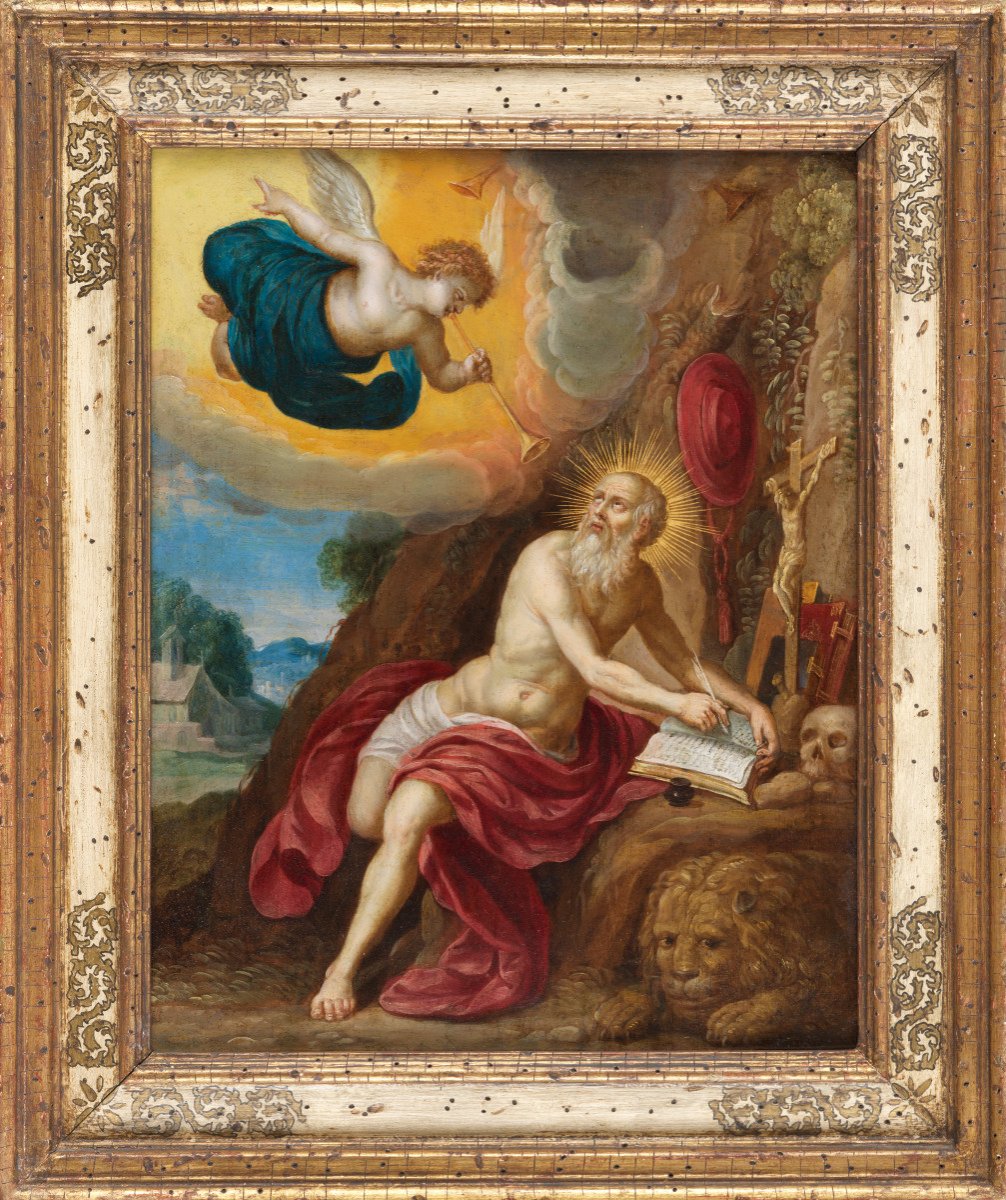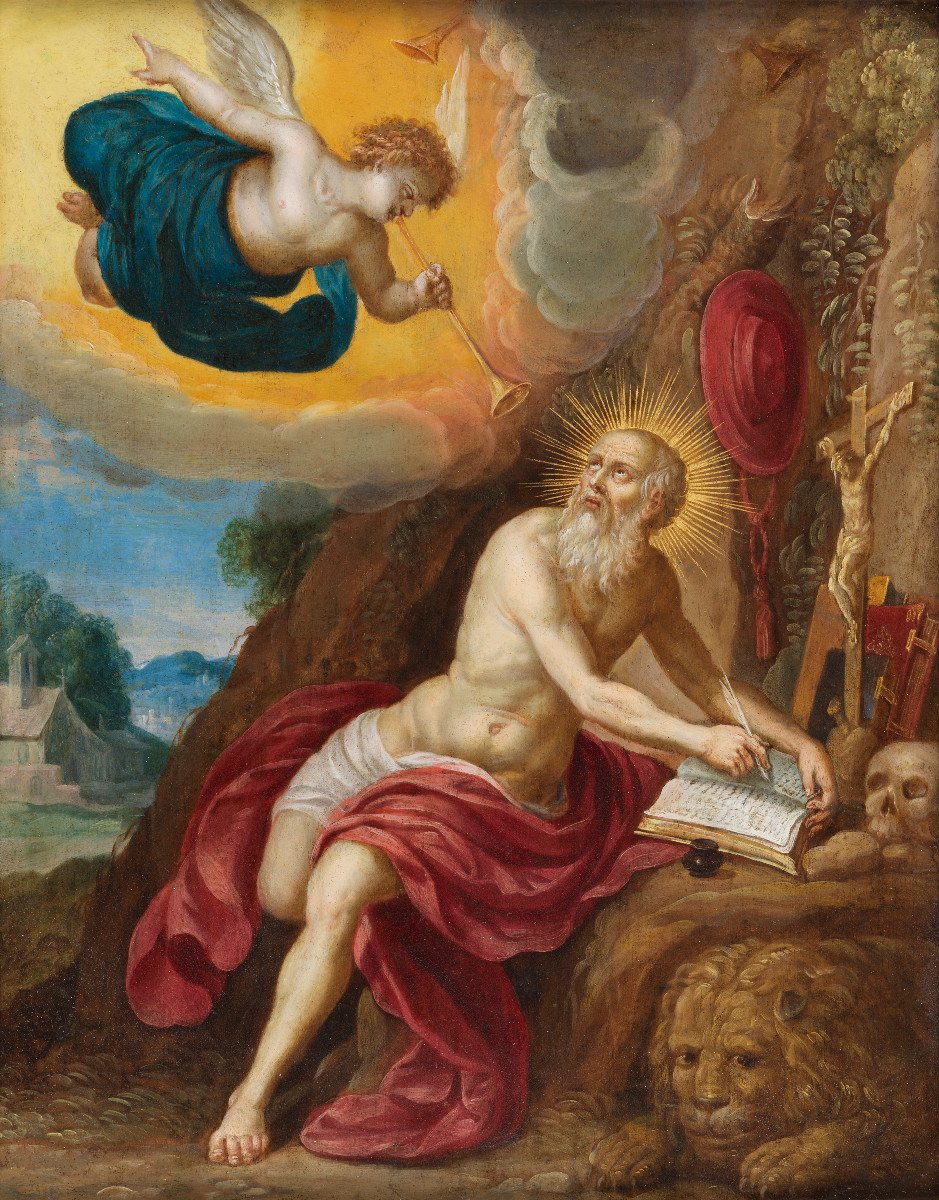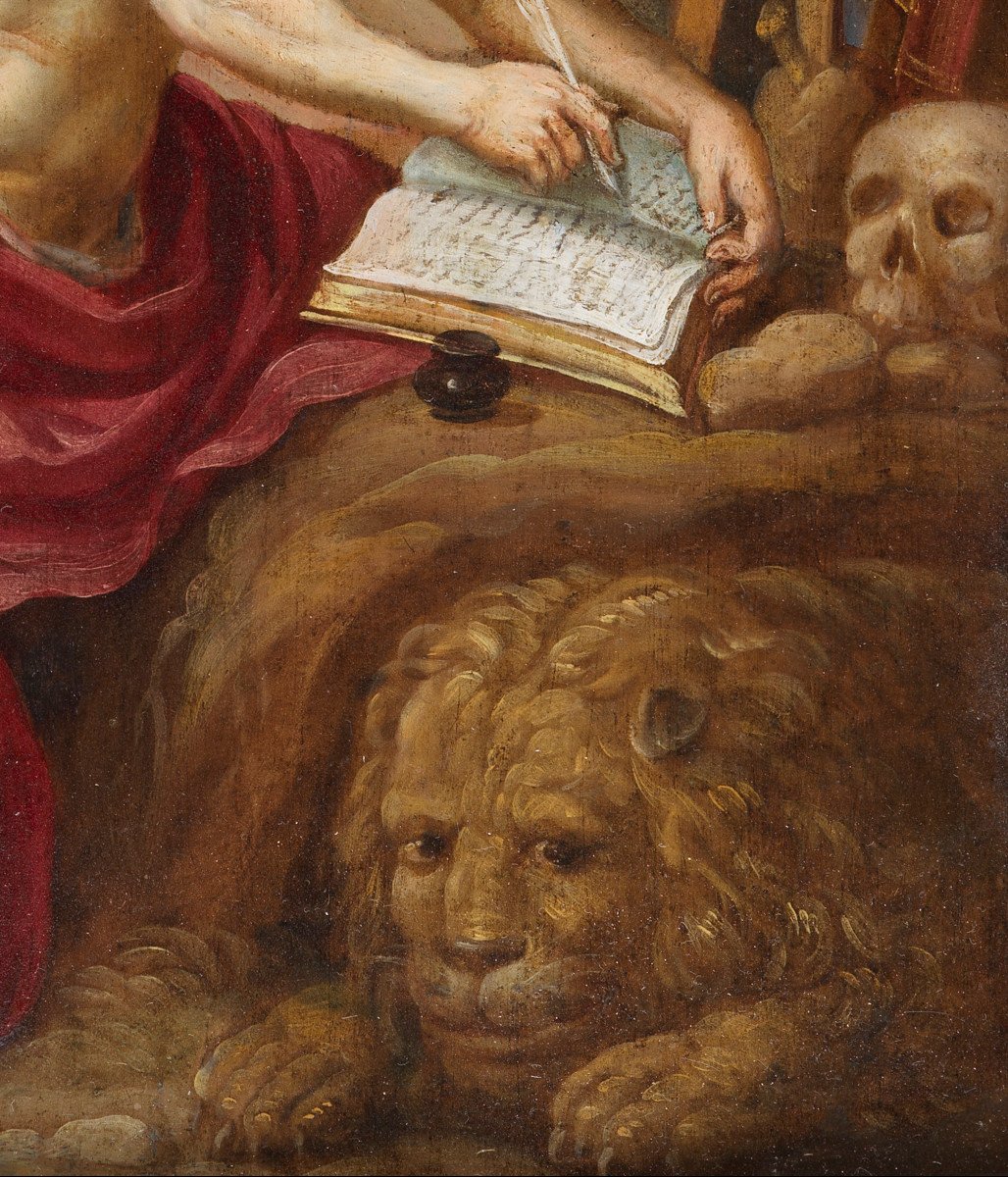A true hagiographic synthesis, our painting brings together in a single composition several episodes from the life of Saint Jerome. Indeed, the painter sets his scene in a cave evocative of the saint's penance in the desert. While translating the Bible into Latin under the watchful eye of his lion, the Doctor of the Church is suddenly interrupted by an angel sounding a trumpet; This is an illustration of an apocryphal letter attributed to the saint: “Whether I wake or sleep, I always believe I hear the trumpet of the Last Judgment”. This motif, unknown in medieval art, appeared in the 16th century within the Flemish school. Around 1602, Dominican in turn exploited this iconography in a Vision of Saint Jerome (Prado, Madrid), without however the angel playing any instrument. These are two engravings by Giuseppe de Ribera, dated 1621, which this time show the angel playing the trumpet in the ears of the saint, the latter being seated in a contrapposto similar to our painting. Subsequently, the motif of the musician angel had a certain iconographic fortune, Guercino, Simon Vouet and Antonio de Pereda each having painted similar works. This mannerist drawing combined with the meticulousness required to paint the symbols of vanity was a perfect exercise for Frans Francken II, the author of our painting. This famous representative of Antwerp Mannerism had already signed a composition similar to ours, in which the saint adopts the same writing position and presents the same attributes. However, the greatest richness of our version is manifested by the presence of the angel springing from an iridescent sky below which opens a landscape whose bluish and green tones bring depth to the whole. This vibrant colorimetric range is reinforced by the copper support on which the artist executed this delightful cabinet painting, a format that Rubens called the “cose piccole”.
Our composition is presented in a reverse profile style frame with painted decoration on the boards.
Dimensions: 30 x 23.5 cm - 40 x 33 cm with the frame
Biography: Frans Francken II (Antwerp, bapt. May 6, 1581 – Id., May 6, 1642) was born into a family of Antwerp painters of which he was the most eminent representative. Probably apprenticed to his father, Frans Francken I, he became master of the guild of Saint Luke of Antwerp in 1605. He worked directly for the great merchant Christian van Immerzeel who helped to spread his cabinet painting throughout Europe. Perfectly mastering the glazing technique, he manages to compose rich scenes in limited formats, while maintaining a high standard of quality. This virtuosity earned him the opportunity to collaborate with the greatest painters of his time, such as Joos de Momper II, Abraham Govaerts and Jan Brueghel I and II.
Bibliographer:
- HARTING, Ursula, Frans Francken der Jüngere (1581-1642): die Gemälde mit kritischem Oeuvrekatalog, Freren, Luca, 1989.
- The Francken dynasty, dir. Sandrine Vézilier Dussart, (exp. cat., Cassel, Musée de Flandre, Sept. 4, 2021 – Jan. 2, 2022), In Fine, 2020.
- PARIS, Jean, Saint Jérôme, Paris, Ed. du Regard, 1999.
- REAU, Louis, Iconography of Christian art, 3 vols. Paris, Presses Universitaires de France, 1959.


























 Le Magazine de PROANTIC
Le Magazine de PROANTIC TRÉSORS Magazine
TRÉSORS Magazine Rivista Artiquariato
Rivista Artiquariato
